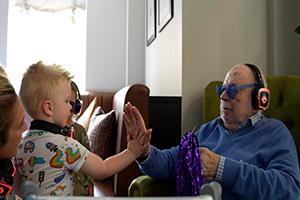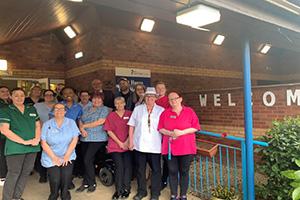How social care can attract more workers by overcoming language barriers

Widespread recent national news has highlighted that the UK’s social care sector desperately needs to attract more staff. According to a recent report from Skills for Care, job vacancies have increased by 55,000 (52%), the highest level since records began.
There are around 165,000 vacancies across social care. When this number is added to the reported 132,000 vacancies in the NHS, it means the UK health and social sector needs to recruit a workforce bigger than the population of Wolverhampton. Additionally, the number of ‘filled’ roles has decreased by about 3%, equating to 50,000, between 2020/21 and 2021/22.
Thus, it is now critical to address language barriers to help both fill vacancies and improve the level of care on the frontline in major cities.
Accessing talent in large urban
The latest census data for England and Wales shows that in large urban areas like London more than 40% of residents are non-UK born, meaning they’re extremely likely to have English as an additional language (EAL). By breaking down language barriers it could unlock a huge pool of workers to the care sector.
Communicating within teams and with some care home residents can already be challenging depending on their health issues. When you add to this that some parties have EAL, communicating can become extremely difficult. Language barriers can lead to a delay in care, confusion in care delivery and also make it difficult to communicate with the patient’s loved ones.
The growing number of current and potential workers, and patients with limited English proficiency is concentrated around large urban areas, which means the need for language support is already critical in large cities like London, Birmingham and Manchester.
Wasted time overcoming communication challenges
Research conducted by Pocketalk shows that more than a third of healthcare workers agreed that language barriers make it more difficult to assess a patient’s needs. The research also showed that healthcare workers are losing around half a working day every week – four and a half hours - overcoming communication challenges.
There is an undeniable need for interpreters, but this comes with costs and is not always quick to implement. Although social care providers can use interpreters, they must rely on the availability of one when needed and ensure consistent quality of translation to build and maintain trust and understanding.
How technology can help
The right technology can help greatly, which is why the UK government announced an extra £5.9bn investment into healthcare in 2021, £2.1bn of which will go on improving IT and digital technology within the NHS. Currently there are a number of tech translation solutions available that can take away some of these pain points and every option comes with its pros and cons.
Google Translate is a solution that can provide instant translation between patient and carer, but the effectiveness of the translations isn’t consistent across all languages. Alternatively, real-time language digital translation devices like GDPR compliant Pocketalk instantly translate a large number of languages in both audio and text - aiding real time communication between parties.
There is now an opportunity for social care providers to use translation technology to attract more staff who speak EAL and overcome communication barriers. This will help to ease staff shortages while improving the clinical outcomes for patients.





